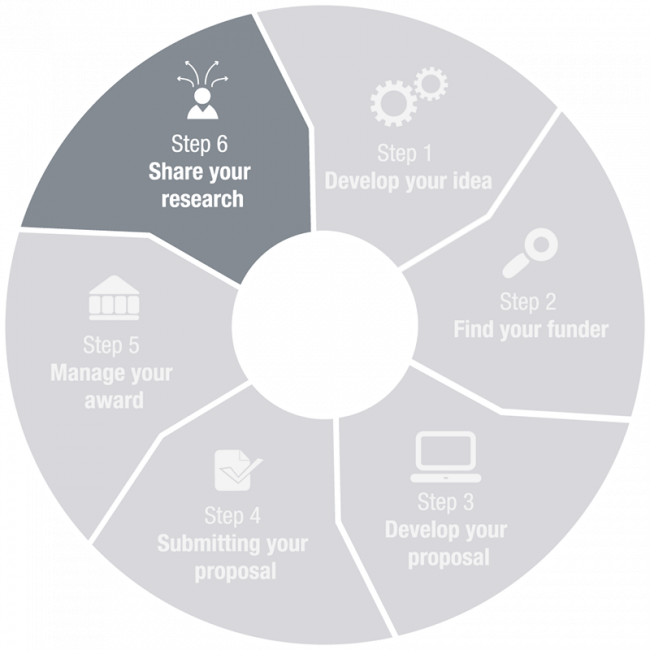Step 6: Publication Strategy
To plan how research results should be disseminated, a publication strategy is a good tool. For the strategy to work as well as possible, it needs to be established early on in a research project. It also often needs to be reconsidered and reformulated during the course of the project. This part of the Research Handbook describes things that are important to consider when a publication strategy is to be developed and maintained.

- Authorship?
If you collaborate with other researchers, decide as early as possible who will be listed as the author or contributor to the publication. Check the journal/publisher’s guidelines for authorship. Some journals require very detailed descriptions of each author’s contribution to the work. Go through and follow the instructions. See Karlstad University’s guidelines for authorship for further guidance - Publication type? Are you going to write a book, book chapter, journal article, conference contribution, or a mix of these? The answer depends on how your project is structured and on the funder’s requirements. It is easy to promise “too much” when writing a research application. Remember that you must deliver what you have promised.
- Journal/publisher’s focus? Does the focus of your research match the publication channel you are interested in? Do not hesitate to ask the editor if your intended publication fits the journal. Do not waste time writing your research in a way that does not follow the requirements and expectations of the publication channel or funder.
- Follow guidelines for submission of manuscripts? In many cases, manuscripts are rejected because the author has not followed the guidelines set by the publication channel. The instructions can be extensive. Make sure to read them several times, and double-check again before you submit your manuscript.
- Time from submission to publication? The publication process is often slow. Check how it usually works with the publication channel you are interested in. Information about this can be found on journal websites, or by contacting the journal’s editorial office.
- Rejection rate? Many prestigious publication channels have a slow publication process and a high rejection rate. Take this into account when designing your publication strategy. Also remember that it is completely normal to be rejected, plan for it. Make a priority list of possible publication channels, so that there is a Plan B if a journal says no.
- Publication channel’s credibility? Unfortunately, there are a number of publishers and journals that try to make money on researchers by tempting with unreasonably fast publication and peer review. As a rule of thumb, serious publishers do not contact authors by email. Contact the library’s Publishing Support team for advice on publisher credibility.
- Language? In many subject disciplines English is the primary language for dissemination of research. However, remember that it can sometimes be appropriate to communicate your research also in Swedish, for example to reach actors outside academia.
- Indexing? Will your research be published in channels that are indexed by large databases like Web of Science and Scopus? Indexing can be important for several reasons. Funders may require that the publication channel is indexed, indexing can improve results in bibliometric analyzes, and your visibility as a researcher increases if you choose an indexed publication channel.
- Publication model? Should you choose to publish with open access or publishing in a traditional subscription journal? How important is it for you to keep your copyright and the right to freely disseminate your research? Does the research funder have open access requirements? (read more about this in the section Share your research).
Once your research has been published, you can promote it to maximize the impact of your research. There are many ways to do this, here are some tips:
- Use social media to spread news about your research. Use your publication’s DOI to give the reader quick access to the research (DOI is a technology for permanent linking to the publication that is used by most major publishers today).
- Include info about your latest publication in your email signature.
- Publish your research in DiVA (at least its metadata, if you do not own the copyright).
- Keep your research profile on KAU up to date (https://inslaget.kau.se/en/education-research/research-support/publish-researcher-profile-kauseenresearchers).
- Get an ORCID, a digital ID for you as a researcher. ORCID helps you distinguish yourself from other researchers, and contributes to you getting recognition for your publications (www.orcid.org).

